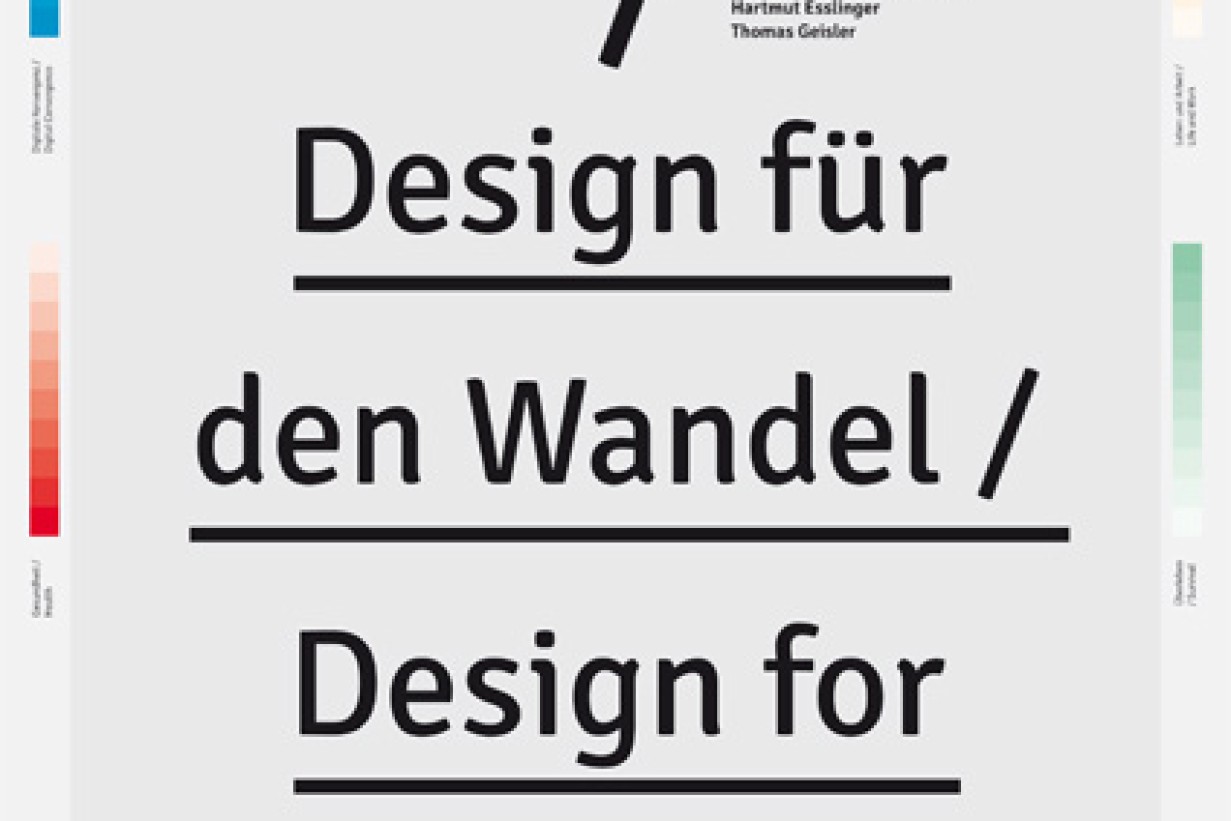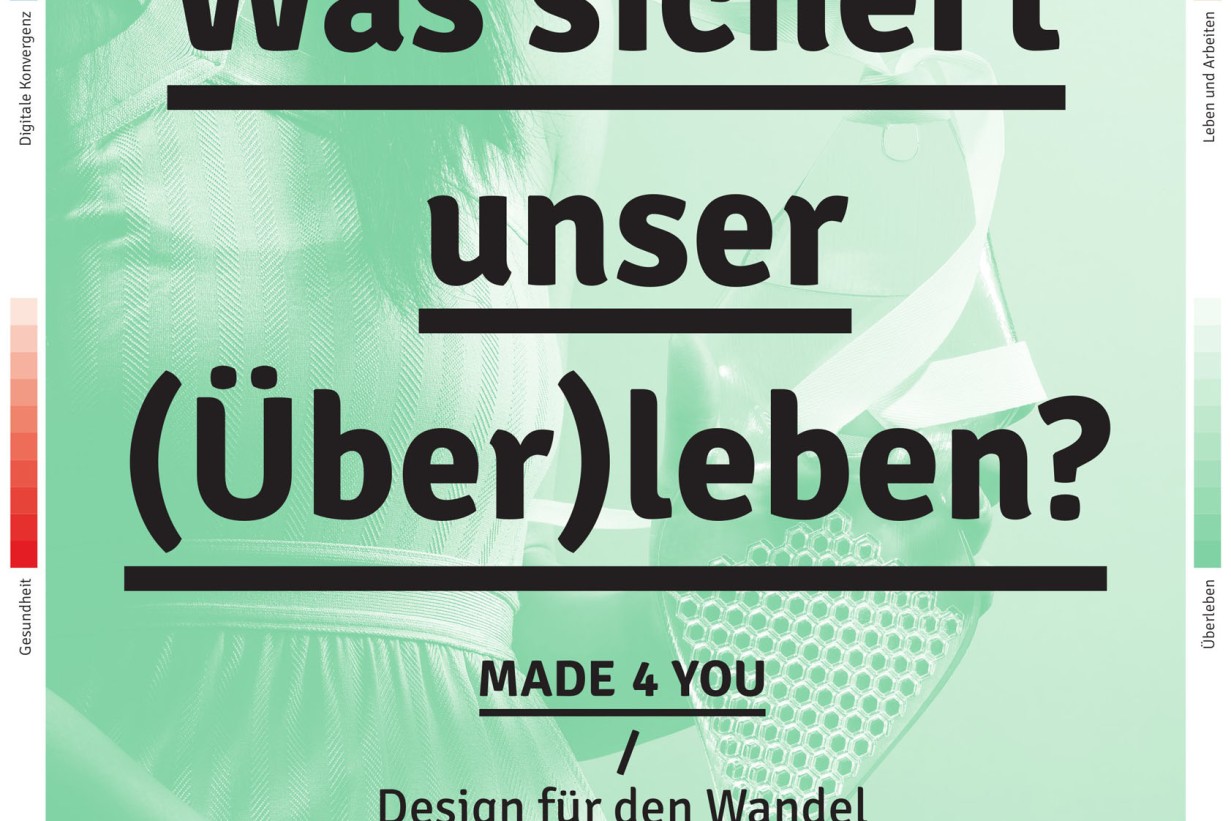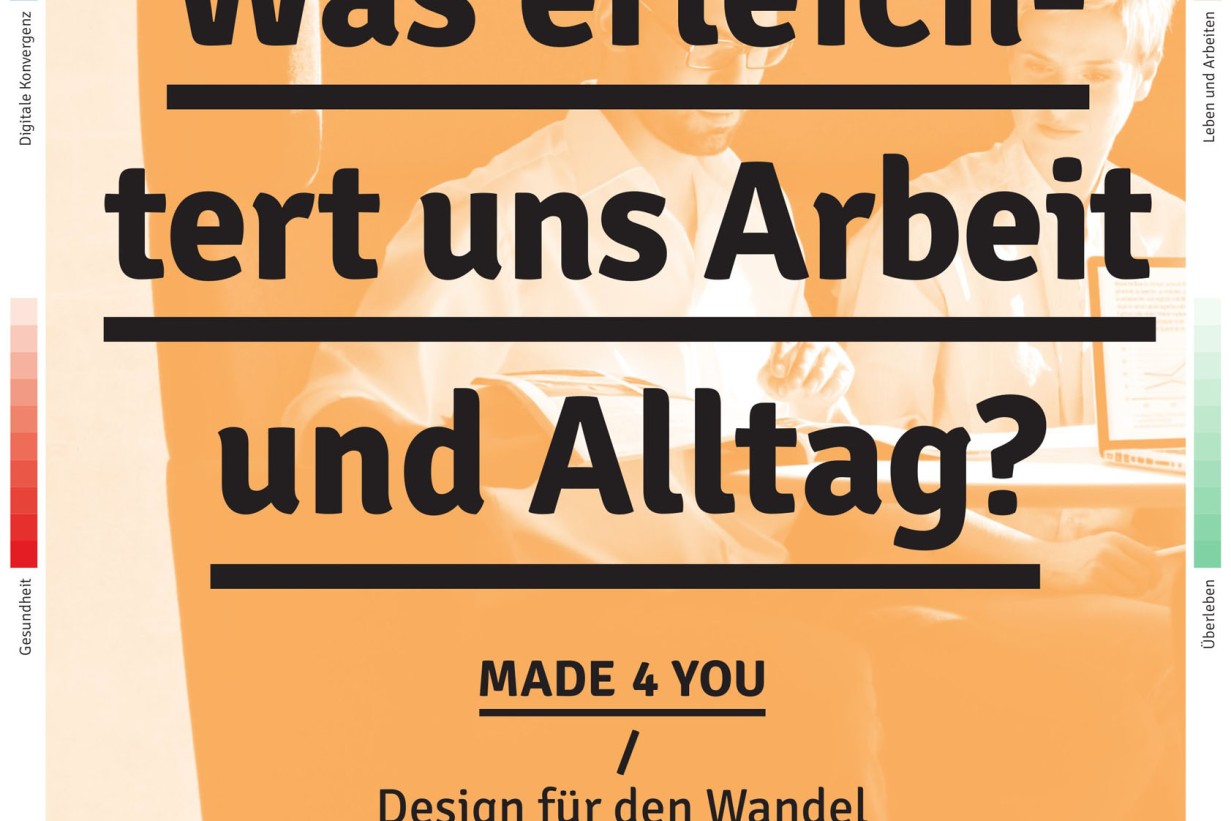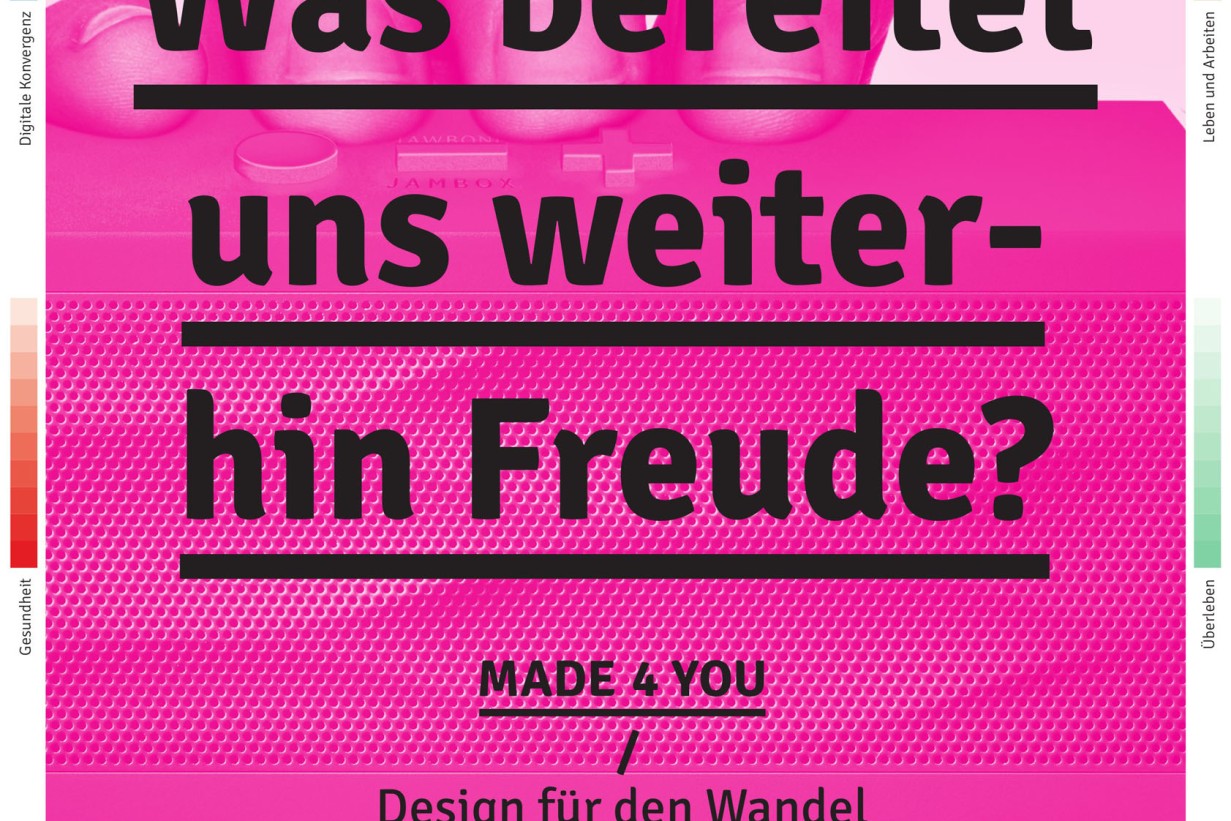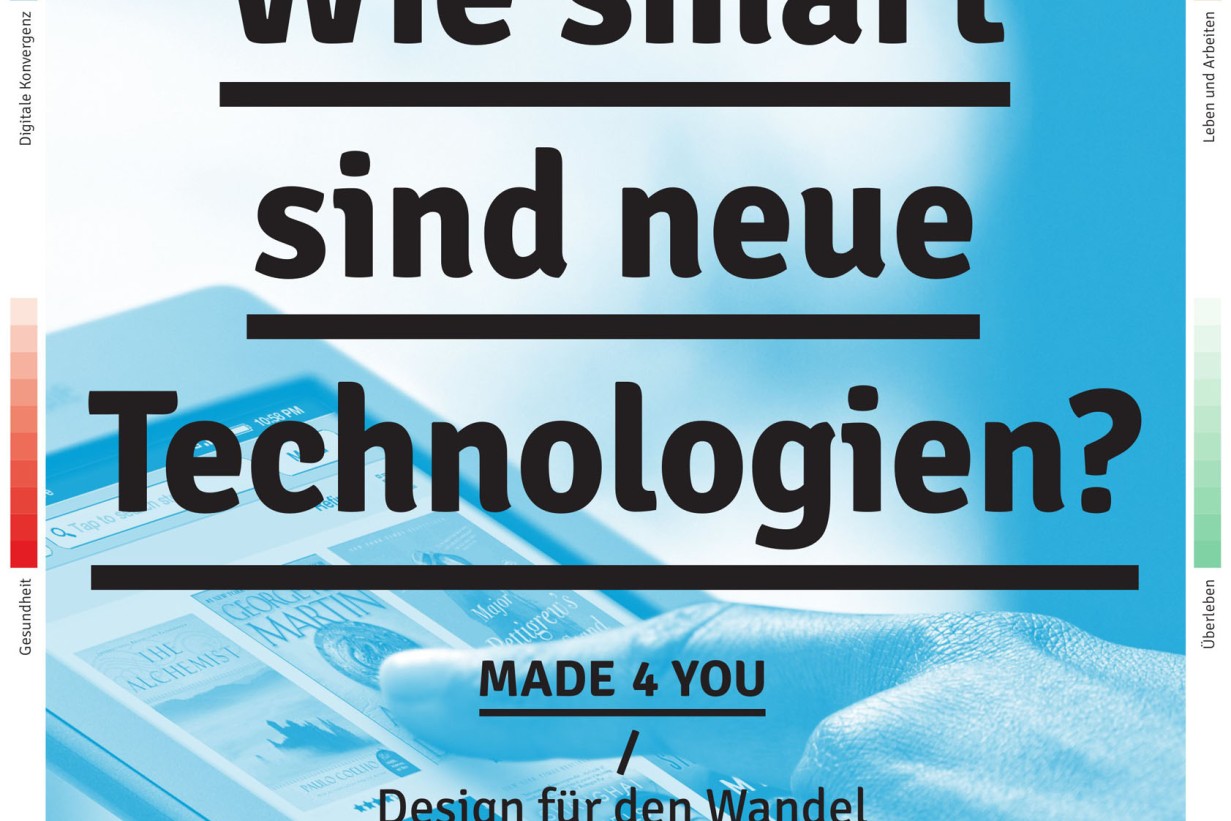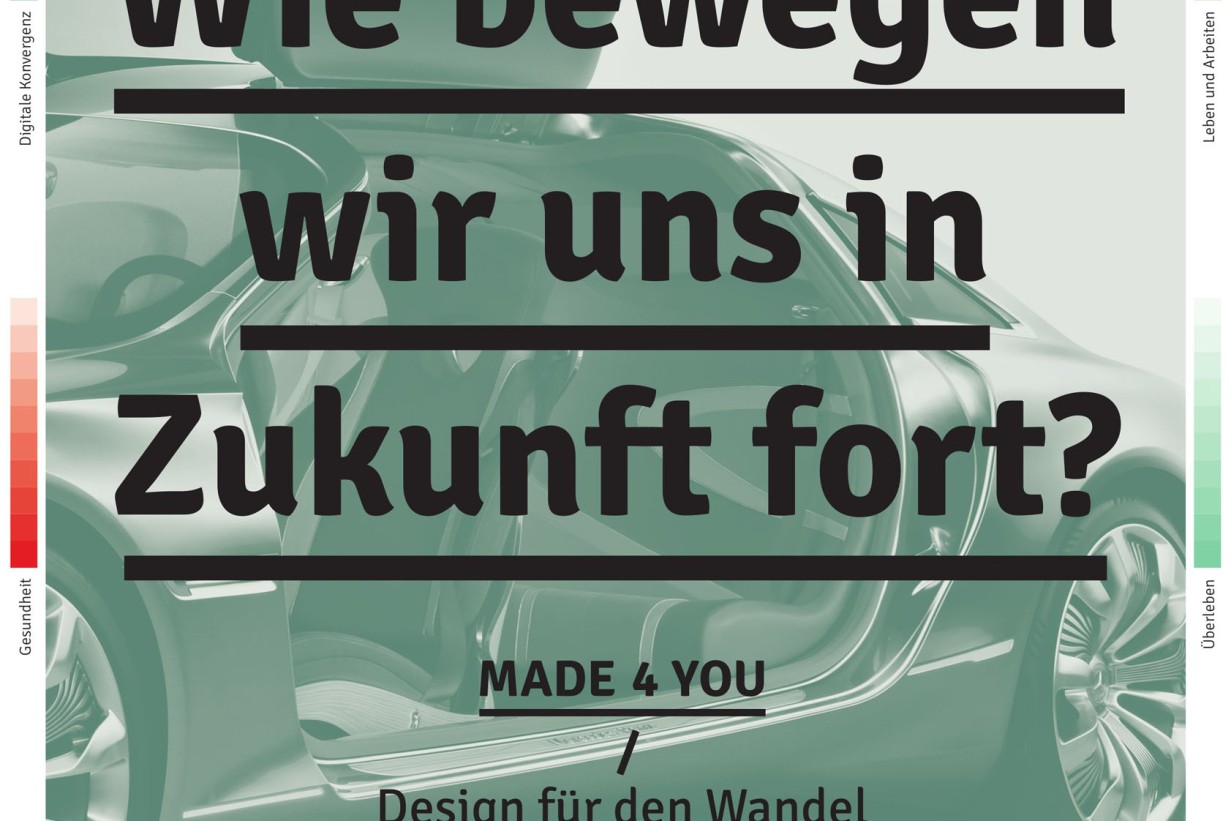Grouped into six everyday-life thematic areas – Mobility, Digital Convergence, Life and Fun, Life and Work, Health, and Survival – MADE 4 YOU explores questions such as:
Mobility
How will we move from place to place in the future?
Extensive mobility has become self-evident—at least in the wealthy North: We fly to our vacation site, ride a subway to work and on a motorcycle out in the countryside, and drive our cars everywhere. The fact that we have relied on fossil fuels and internal combustion engines for much too long has brought alarming consequences: global warming with devastating results and city smog, to name but a few.
The design of future mobility must focus on the use of renewable energy as well as the development of low-emission engines; keyword: e-mobility. Private transport should also be rethought, as metropolises are in no position to deal with greater automobile traffic. Smaller, more economical vehicles and a more effective development of public transportation networks, as well as new mobility concepts are approaches for solving the problem. Concretely, demographic change must also be taken into consideration: mobility has to comply with the needs of a growing number of senior citizens. Since we have, ultimately, become accustomed to the fact that mobility is fun, design goals such as comfort, a sense of speed, and expressing lifestyle via design remain essential within consumer democracy.
Digital Convergence
How smart are the technologies of tomorrow?
The profound extent to which the World Wide Web, with all of its possibilities has changed our life, work, and learning, the way we communicate, consume, and interact socially in just barely twenty years is practically unbelievable. With digitization and networking, many analogue storage and carrying media, such as paper and books, sound storage media, and analogue television have become obsolete or have, at least, met with tough digital competition.
The end products that we use—smartphone, tablet PC, etc.—are becoming increasingly less specific: they open every file and link, can play everything and use all communication interfaces. The digital code with which they operate is now a universal language for all content, whether image, sound, or text. Designers are increasingly confronted with the challenge of shaping this “digital convergence,” this merging of diverse functions and formats. User surfaces and interfaces must remain sensible and understandable despite all of their multi-functionality and multimedia capabilities. And, last but not least, for long-term survival on the market, devices must remain both goal-oriented and a pleasure to use.
Life and Fun
What will we continue to enjoy?
When everyday life provides enjoyment, it often has to do with its products. The digital revolution has mainly led to entertainment electronics that are meanwhile so small, handy, and mobile, that we can listen to our favorite music everywhere, and consume our favorite media at any time—in the subway, while playing sports, or traveling.
Consumers are sometimes even enticed into a virtual world, such as in many computer games. In addition, ergonometrics are essential in leisure design: sports shoes must allow for optimal movement and at the same time offer support; when wearing earphones, sound should be at the forefront and the device should be as inconspicuous as possible. Babies already intuitively decide whether a product has the right haptics, that is, if it has the right hold and feel—a further important aspect of design, which presumes a designer's psychological intuition, and plays a role in a product's success. Since we also construct our identity and lifestyle through everyday things—their color, form, function, price, and brand name, etc.—design has a powerful function in individual and collective aspirations of happiness and satisfaction.
Life and Work
What can make work and everyday life easier for us?
While today’s leisure time is, indeed, increasingly subjected to design and optimization, the work area continues to be where efficiency, speed, and smooth processes are foregrounded. Safe, functional tools, optimal work organization, and laborsaving machines lead to an increase in productivity.
In the post-Fordian working world, ever less physical labor is performed; instead, we are increasingly bound to our desks and computers. The design of office spaces, their ergonometrics and lighting, thus play a major role. Since we realize our personalities, to a certain extent, through our work, the working environment is not restricted to purely functional aspects, but also includes emotional ones, and atmospheres. A working environment with a friendly design, introducing coloring, intelligent interior architecture and equipment, which is thereby enjoyable to work in, increases work satisfaction. And it has been shown that satisfaction not only keeps people healthy, but is also a positive way to increase productivity—which, of course, also applies to work done at home!
Health
How can we create health care systems for all?
In connection with new technologies, medical science and research have revolutionized products in the healthcare field. Computer simulation of bionic principles, for example, has led to the development of new types of prostheses; mobile, digital devices furnished with sensorics that allow therapy at home, thereby liberating patients from the clinic.
Avatars (virtual people) provide onscreen instructions for rehab and fitness exercises. The development of new products increasingly has in view economic, ecological, and social components of the health system, in addition to improvements in medical care. In line with patient-centered medicine, technological and design innovations thereby aim to cope with the specific needs of various groups—whether the rapidly growing number of senior citizens or people with various types of handicaps. The consequence for designers is that they must grapple intensely with these needs. But in the design of products, focus is also on prevention, care, and no least, the preservation of the best quality of life possible, even when ill.
Survival
What guarantees our existence and survival?
In an emergency, effective avalanche beacons and capable tools in the first-aid bag can prove lifesaving for individuals— and they, too, are “designs for survival.” With regard to the overall world population, however, the theme of survival has even greater, and, mainly, more long-term dimensions: 8.1 billion people will live on earth in 2040 according to the Club of Rome, and will do so with diminishing resources.
Since there is an unequal distribution of these resources, technological-and design-innovation must consistently be applied in situations that are truly about pure survival: in developing and newly industrialized countries. When designers aim to develop appropriate products and strategies for the alleviation of need, important first and foremost is the consideration of specific living situations and local conditions. For wealthy countries, on the other hand, necessary is the rapid development of effective concepts for sustainable, resource-friendly living and commerce—the “Smart City,” for instance. In the end, however, the issue is global redistribution: current famines and climate catastrophes affect us all, even when it is others who feel the affects first.
